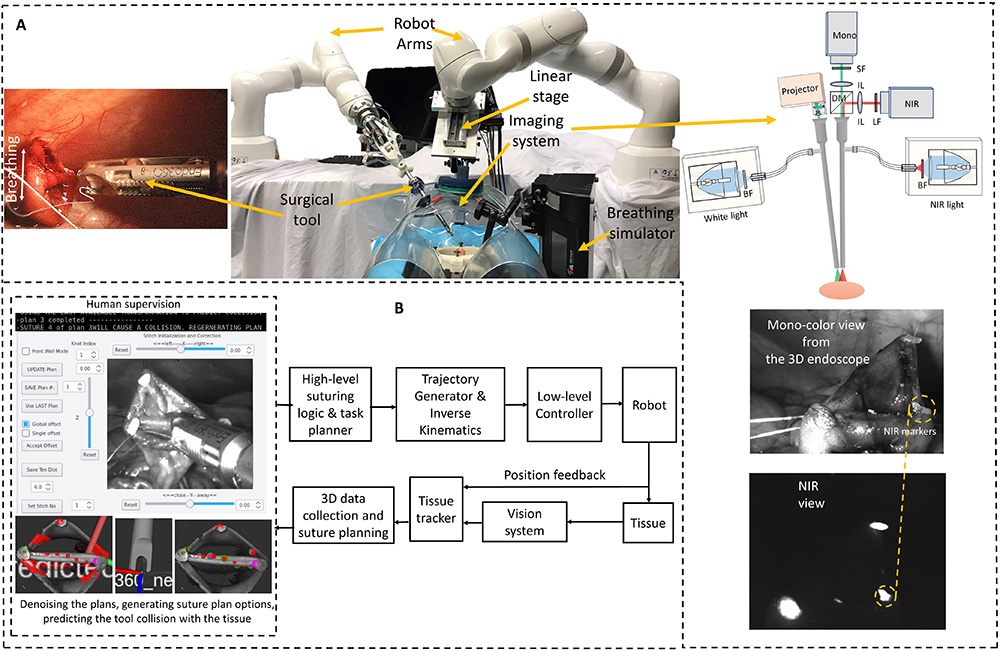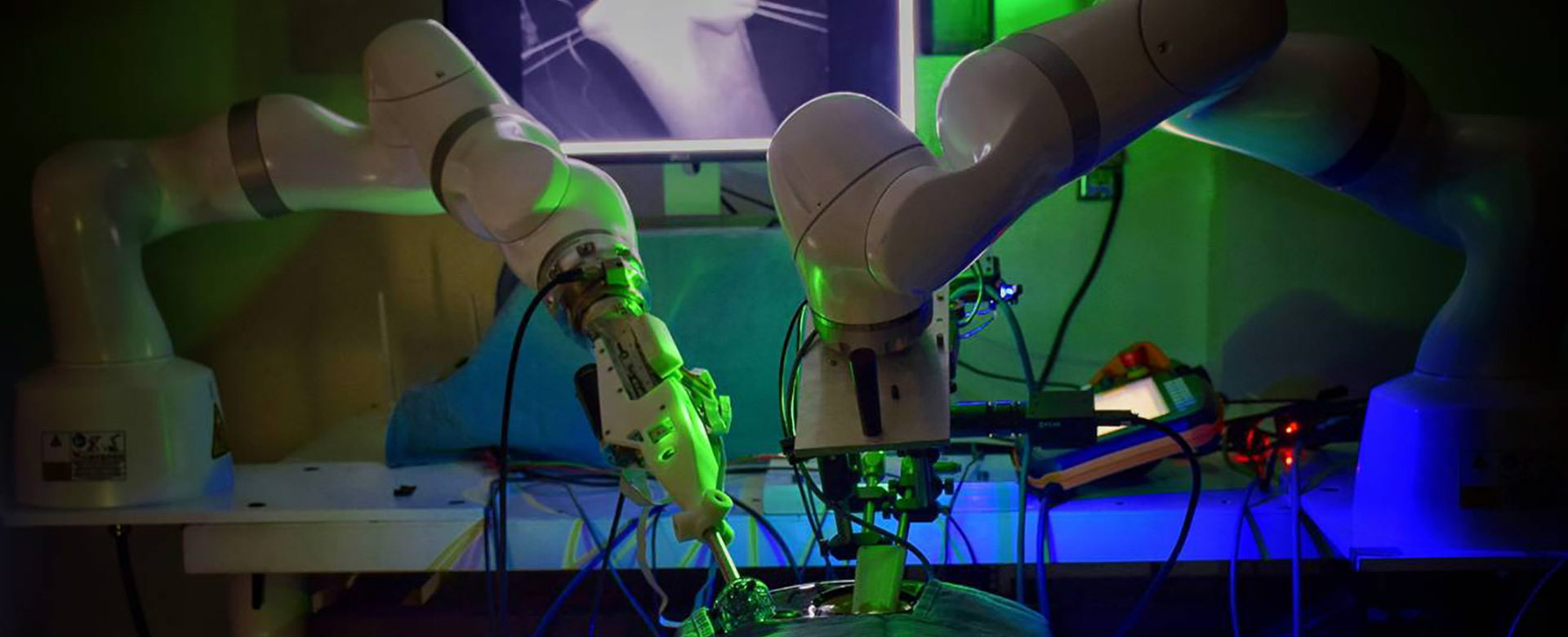For the first time in the field a self directed and fully autonomous surgical robot has performed a laparoscopic surgery without the guiding hands of a human. The surgery was carried out by researchers at John Hopkins University and their STAR robotic system, which stands for Smart Tissue Autonomous Robot. This groundbreaking procedure moves the field one step closer towards fully automated surgery on humans.
STAR successfully performed one of the most complex laparoscopic procedures
The surgery that was performed by STAR on the soft tissue of a pig is one of the most challenging laparoscopic procedures in gastrointestinal surgery: intestinal anastomosis. Intestinal anastomosis is performed to establish communication between two formerly distant portions of the intestine, essentially reconnecting two ends of the intestine usually after the removal of a pathologic condition affecting the bowel.
Intestinal anastomosis requires a high level of repetitive motion and precision demanding of surgeons to suture with extreme accuracy and consistency. Even slight hand tremors or misplaced stitches can result in intestinal leaks that could lead to catastrophic complications for the patient.
Researcher believes STAR performs as well as or even better than humans
One of the senior authors on the project, Axel Krieger, also assistant professor of mechanical engineering at Johns Hopkins’ Whiting School of Engineering, believes that the STAR system is comparable or even better than humans at performing the procedure. “Our findings show that we can automate one of the most intricate and delicate tasks in surgery: the reconnection of two ends of an intestine. The STAR performed the procedure in four animals and it produced significantly better results than humans performing the same procedure”.

The successful execution of this procedure signifies an important step forward in the evolution of self guided, automated surgery robots because of the many challenges the STAR system had to overcome. For example, soft tissue is a major challenge for robots with its propensity for movement making it unpredictable, it often demands from surgeons the ability to make adjustments to the surgical plan during operations in real time, something that autonomous robots were previously unable to perform with a high enough degree of proficiency, until now.
Significant challenges in vision and imaging were overcome with new state-of-the art machine vision systems and machine learning algorithms that provide more accurate visualizations of the surgical field, even as the soft tissue moves during the procedure, allowing STAR to also adjust its surgical plan and adapt to challenges in real time during the surgery in the same manner a human surgeon would.
STAR had to overcome complex technical challenges to accomplish its mission
“What makes the STAR special is that it is the first robotic system to plan, adapt, and execute a surgical plan in soft tissue with minimal human intervention,” said first author Hamed Saeidi, a visiting research scientist of mechanical engineering at Johns Hopkins’ Whiting School of Engineering.
The research team at John Hopkins has been working on STAR for many years having already completed a successful laparoscopic procedure on a pig in 2016, however that procedure required a significantly larger keyhole incision and more guidance from humans. The fact that the team has made so much progress in the intervening years bodes well for the evolution and adoption of the technology as the medical field moves towards more laparoscopic approaches for surgeries. Some researchers believe this robotic approach can standardize a higher level of performance across the field.
Researcher believes robotic anastomosis has potential to democratize elements of patient care
“Robotic anastomosis is one way to ensure that surgical tasks that require high precision and repeatability can be performed with more accuracy and precision in every patient independent of surgeon skill,” Krieger said. “We hypothesize that this will result in a democratized surgical approach to patient care with more predictable and consistent patient outcomes.”
Robotic surgery, or robot assisted surgery, can provide many benefits to patients, doctors and the healthcare system. It allows doctors to perform many complex procedures with more accuracy, flexibility and control than traditional methods. The evolution of robot assisted surgery to fully automated surgery is still in its early stages but progressing rapidly and we will be monitoring its progress with interest.
The paper was published in the journal Science Robotics.
Source: Johns Hopkins University.
About BML Technology
BML Technology understands digital health. At the intersection of medical technology, clinical research and patient-centric healthcare BML drives the mainstream adoption of digital technology in healthcare. Offering a full range of services to the digital health ecosystem BML manages the complex stakeholder interactions necessary to get digital health solutions to market and gain adoption.
Stay Connected with BML Technology.
Connect with BML Technology on LinkedIn.


